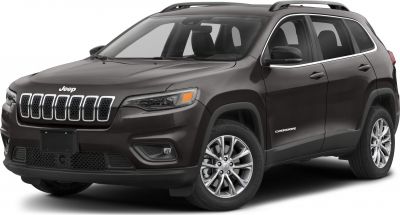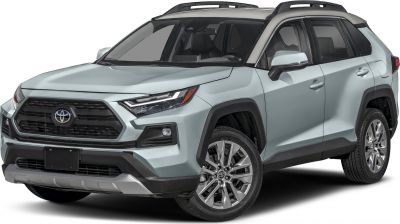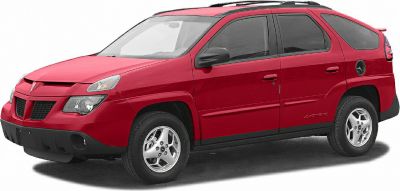 2022 Mazda CX-5 II (facelift 2021) Dimensions, Size & Specs
2022 Mazda CX-5 II (facelift 2021) Dimensions, Size & SpecsMeasurements of the 2022 Mazda CX-5 II, engineered for optimal performance and comfort
| Dimensions | |
|---|---|
| Length: | 4575 mm180.1 in15.0 ft |
| Width: | 1845 mm72.6 in6.1 ft |
| Width (Opened Mirrors): | 2116 mm83.3 in6.9 ft |
| Height: | 1675-1684 mm65.9-66.3 in5.5-5.5 ft |
| Ground Clearance: | 192-201 mm7.6-7.9 in0.6-0.7 ft |
| Trunk Capacity: | 438-824 liter15.5-29.1 cu ft |
| Trunk Capacity (Max): | 1340-1679 liter47.3-59.3 cu ft |
| Weight Specifications | |
| Curb Weight: | 1411-1749 kg3111-3856 lbs |
| Maximal permitted Weight: | 2020-2235 kg4453-4927 lbs |
| Roof Load: | 75 kg165 lbs |
| Tire Specifications | |
| Rims Sizes: | 17-inch rims:
|
| Tire Sizes: |
|
The 2022 Mazda CX-5 II facelift, produced from 2021 to the present, represents a refined version of Mazda’s popular compact SUV lineup. Measuring 4,575 mm (179.9 inches) in length and around 1,844 to 1,845 mm (72.6 to 72.6 inches) in width, the CX-5 offers a balanced footprint suitable for urban driving as well as highway cruising. When including the opened mirrors, the width expands to approximately 2,115 to 2,116 mm (83.3 inches), ensuring adequate driver visibility and presence on the road.
Height ranges from 1,675 to 1,684 mm (65.9 to 66.3 inches), contributing to a commanding yet manageable stance. The ride height or ground clearance varies between 192 and 201 mm (7.6 to 7.9 inches), enabling the vehicle to tackle moderate off-road terrain and uneven surfaces comfortably. With a curb weight spanning from 1,411 to 1,749 kg (3,112 to 3,855 lbs) and a maximum permissible weight between 2,020 and 2,235 kg (4,452 to 4,926 lbs), this SUV balances solid construction with efficiency.
Luggage capacity is competitive within its segment, offering 438 to 824 liters (15.5 to 29.1 cubic feet) of cargo space with the rear seats upright. Folding down the rear seats expands capacity significantly to between 1,340 and 1,679 liters (47.3 to 59.3 cubic feet), providing ample room for bulky cargo or long trips. The roof load limit is rated at 75 kg (165 lbs), supporting roof racks or additional cargo accessories for enhanced utility.
The CX-5 II facelift rides on rims ranging in size from 7J x 17 to 7J x 19 inches paired with tires sized 225/65 R17 or 225/55 R19, giving drivers options that impact ride comfort and handling. These specifications emphasize Mazda’s attention to blending style, performance, and practicality in their compact SUV segment.
Overall, the Mazda CX-5 II facelift 2021 edition remains a compelling choice for drivers seeking a versatile SUV with well-rounded dimensions, efficient use of interior space, and admirable driving dynamics. Its dimension spread makes it accommodating for families, professionals, and adventurers alike while standing out in the competitive market of compact SUVs.
Discover the standout features that make the 2022 Mazda CX-5 II a leader in its class
Have a question? Please check our knowledgebase first.
The Mazda CX-5 II facelift 2021 model, starting from the 2022 model year, measures 4575 mm (179.9 inches) in length. Its width ranges between 1844 and 1845 mm (72.6 to 72.6 inches), with mirrors opened it spans 2115 to 2116 mm (83.3 to 83.3 inches). The height varies from 1675 to 1684 mm (65.9 to 66.3 inches), depending on the trim and configuration. These dimensions position the CX-5 as a compact SUV, balancing interior space with maneuverability for urban and suburban driving.
The Mazda CX-5 II facelift has a ride height or ground clearance ranging from 192 mm to 201 mm (7.6 to 7.9 inches). This clearance is average for compact SUVs, providing adequate ability to handle light off-road conditions, such as gravel roads or uneven terrain. It also facilitates better visibility and safer driving over obstacles compared to standard passenger cars. However, it's not designed for extreme off-roading but more for enhanced comfort and versatility in mixed urban and country driving environments.
The curb weight of the Mazda CX-5 II facelift 2021 ranges between 1411 kg and 1749 kg (approximately 3110 to 3855 lbs), depending on the specific trim level, engine, and equipment options. Maximum allowed weight (gross vehicle weight rating) is from 2020 kg to 2235 kg (4453 to 4928 lbs). The variation in weight reflects differences in drivetrain configurations, optional features, and trim packages. This weight affects fuel economy, handling, and towing capacity, with the vehicle designed to optimize performance while maintaining safety and comfort.
With all rear seats in place, the Mazda CX-5 II facelift offers a luggage capacity ranging from 438 to 824 liters (15.5 to 29.1 cubic feet). When folding down the rear seats, the capacity significantly increases, ranging between 1340 and 1679 liters (47.3 to 59.3 cubic feet), providing generous space for larger cargo items. These variations depend on specific seat configurations and optional equipment. This flexible cargo space makes the CX-5 practical for everyday errands as well as for longer trips requiring more storage.
Yes, the Mazda CX-5 II facelift 2021 fits comfortably into a standard residential garage. Typical garages have dimensions around 6 meters (20 feet) in length and 2.4 to 3 meters (8 to 10 feet) in width, which easily accommodate the CX-5's length of 4575 mm (179.9 inches) and width of approximately 1845 mm (72.6 inches). Even with mirrors unfolded to a width of about 2115 mm (83.3 inches), the vehicle can be maneuvered safely with usual care. Its moderate height of up to 1684 mm (66.3 inches) also presents no issues with garage clearances.
The width of the Mazda CX-5 II facelift with mirrors opened is approximately 2115 to 2116 mm (83.3 inches), which is wider than the body width itself (around 1845 mm or 72.6 inches). This increased width is important to consider when parking in narrow spots or navigating tight urban environments. Drivers should be mindful of the mirrors to avoid damage to them or nearby obstructions. Despite this, the CX-5's size remains manageable for most parking garages, lanes, and spaces designed for compact to mid-size SUVs.
Compared to its predecessor, the Mazda CX-5 II facelift 2021 maintains very similar overall dimensions, with a length of 4575 mm staying consistent with the prior generation. However, minor adjustments in width, height, and curb weight reflect design updates and added features. The curb weight ranges between 1411 and 1749 kg, slightly varied from the older generation due to newer safety technologies, materials, and equipment. The facelift refines aerodynamics and styling without notably changing the core footprint, ensuring existing owners find familiar handling and comfort.
The Mazda CX-5 II facelift 2021 is competitively sized among compact SUVs like the Honda CR-V, Toyota RAV4, and Hyundai Tucson. With a length of 4575 mm (179.9 inches) and width around 1845 mm (72.6 inches), it usually fits just within or slightly below the size averages of this segment. Its ground clearance between 192 and 201 mm (7.6 to 7.9 inches) is typical, balancing urban usability with some off-road capability. Its cargo space and weight specifications are also on par with key rivals, making it a well-rounded choice for customers interested in this SUV category.
The Mazda CX-5 II facelift 2021 offers rim sizes including 7J x 17, 7J x 19, and 7.7J x 19 inches, paired with tire sizes of 225/65 R17 and 225/55 R19. The smaller 17-inch rims with 65-profile tires typically provide a more comfortable ride due to better shock absorption on rough roads. The larger 19-inch rims with lower profile 55-series tires enhance handling and cornering stability but may result in a firmer ride. Choosing between these options depends on the driver's preference for comfort versus sportier driving dynamics.
The maximum roof load capacity for the Mazda CX-5 II facelift 2021 is 75 kg (approximately 165 lbs). This means you can safely install roof racks, cargo boxes, or carriers within this weight limit without compromising vehicle stability or roof integrity. Exceeding this limit could cause damage to the roof structure or negatively affect the vehicle’s handling, particularly at higher speeds or in windy conditions. The 75 kg roof load is typical for compact SUVs, balancing utility with safety considerations for roof-mounted cargo.
Discover similar sized cars.

| Production: | 2010-2014 |
|---|---|
| Model Year: | 2010 |
| Length: | 4541 mm178.8 in |
| Width: | 1780 mm70.1 in |
| Height: | 1645 mm64.8 in |

| Production: | 2008-2010 |
|---|---|
| Model Year: | 2008 |
| Length: | 4530 mm178.3 in |
| Width: | 1780 mm70.1 in |
| Height: | 1645 mm64.8 in |

| Production: | 2018-2023 |
|---|---|
| Model Year: | 2018 |
| Length: | 4623 mm182.0 in |
| Width: | 1859 mm73.2 in |
| Height: | 1669-1681 mm65.7-66.2 in |

| Production: | 2006-2010 |
|---|---|
| Model Year: | 2007 |
| Length: | 4575 mm180.1 in |
| Width: | 1850 mm72.8 in |
| Height: | 1704 mm67.1 in |

| Production: | 2021-present |
|---|---|
| Model Year: | 2021 |
| Length: | 4595-4615 mm180.9-181.7 in |
| Width: | 1854-1865 mm73.0-73.4 in |
| Height: | 1685-1742 mm66.3-68.6 in |

| Production: | 2018-2021 |
|---|---|
| Model Year: | 2019 |
| Length: | 4595-4610 mm180.9-181.5 in |
| Width: | 1854-1864 mm73.0-73.4 in |
| Height: | 1685-1742 mm66.3-68.6 in |

| Production: | 2000-2005 |
|---|---|
| Model Year: | 2001 |
| Length: | 4585 mm180.5 in |
| Width: | 1872 mm73.7 in |
| Height: | 1702 mm67.0 in |

| Production: | 2010-2015 |
|---|---|
| Model Year: | 2010 |
| Length: | 4596 mm180.9 in |
| Width: | 1850 mm72.8 in |
| Height: | 1717 mm67.6 in |
